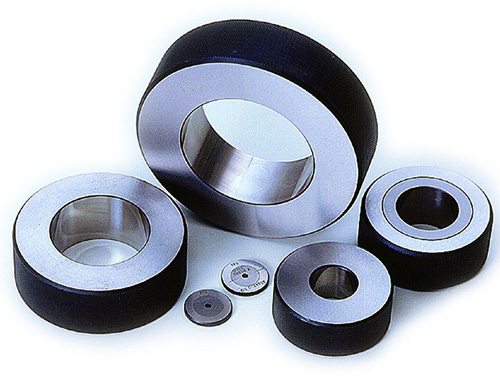What are Go/No Go Gauges?
Go and No-Go gauges are tools used to check the tolerances of components or workpieces; commonly used to check thread depth and internal/external diameters.
The name does “exactly what it says on the tin” in this instance; a “Go” gauge intends to go inside a hole in the component, whereas a “No Go” is not meant to fit inside the part.
For example, if a hole in the part is meant to be 20mm in diameter, with a tolerance of plus or minus 0.1mm (so the hole can be as small as 19.9mm or as big as 20.1mm), you could use a “Go” gauge set to the lowest tolerance (19.9mm) to check the hole is big enough; and a “No Go” gauge set at 20.1mm to ensure it’s not too big.
Outcomes of using Go/No-Go
| Check Result | Outcome | |
| Scenario 1 | Go and No-Go gauges both fit the hole | Part is rejected.
The hole is too big if both gauges fit |
| Scenario 2 | Go Gauge Fits & No-Go Gauge does not fit | Part is accepted.
The hole size is within tolerance if only the go-gauge fits |
| Scenario 3 | Both gauges don’t fit | Part is rejected.
The hole is too small if neither gauge fits |
Types of Go/No-Go Gauges
Plug Gauges
 |
These are simple cylindrical gauges which check if holes or threads are within the tolerance limits.
As the name suggests, the “Go” gauge will “plug” the hole if within tolerance, and the “No-Go” gauge should not fit.
For threads, the no-go will be an oversized thread which should not fit the threaded hole on the part.
These come in both imperial and metric sizes, and in a variety of thread specifications (such as NPT/BSPT/BSF/UNF/BSW/UNC) |
Ring Gauge
 |
These are the reverse of plug gauges, as the ring gauge themselves are the “holes” so are used to check if pins or round features (or items with external threads) are the correct size.
“No-Go” Threaded ring gauges will have an undersized hole in them, so the external thread of the part will not fit.
These come in both imperial and metric sizes, and in a variety of thread specifications (such as NPT/BSPT/BSF/UNF/BSW/UNC) |
Advantages of using Go/No-Go Gauges
- Simple to use
- Accurate (provided the gauges are kept calibrated)
- No need to measure the dimensions manually as the gauge tells you if the part is within the tolerance
- Economical method as does not involve costly equipment, and doesn’t require specialized training
Disadvantages of using Go/No-Go Gauges
- If dimensional paperwork is required, such as with ISIR/PPAP, then the dimensions will still need to be manually checked
- If the holes or external threads are bespoke (rather than standard sizes) then getting specialist gauges made can be costly.
We have an extensive range of gauges in stock and offer a gauge rental service; offering use of our calibrated gauges for your own project. Our quality control team will be happy to assist if you need support on which gauges would be required to suit your component.
We also offer bespoke quality inspection services at Chartway, so if you require your parts to be dimensionally checked or tested by our experienced quality control team, please get in touch with your enquiry

